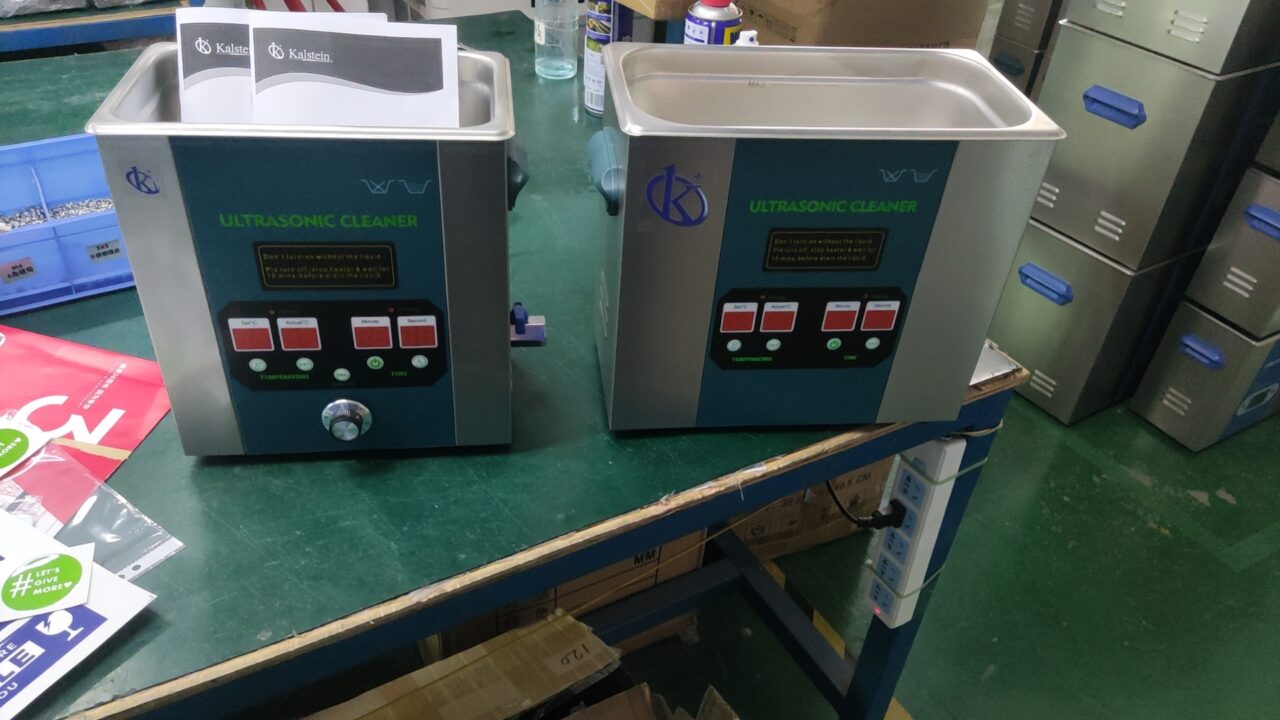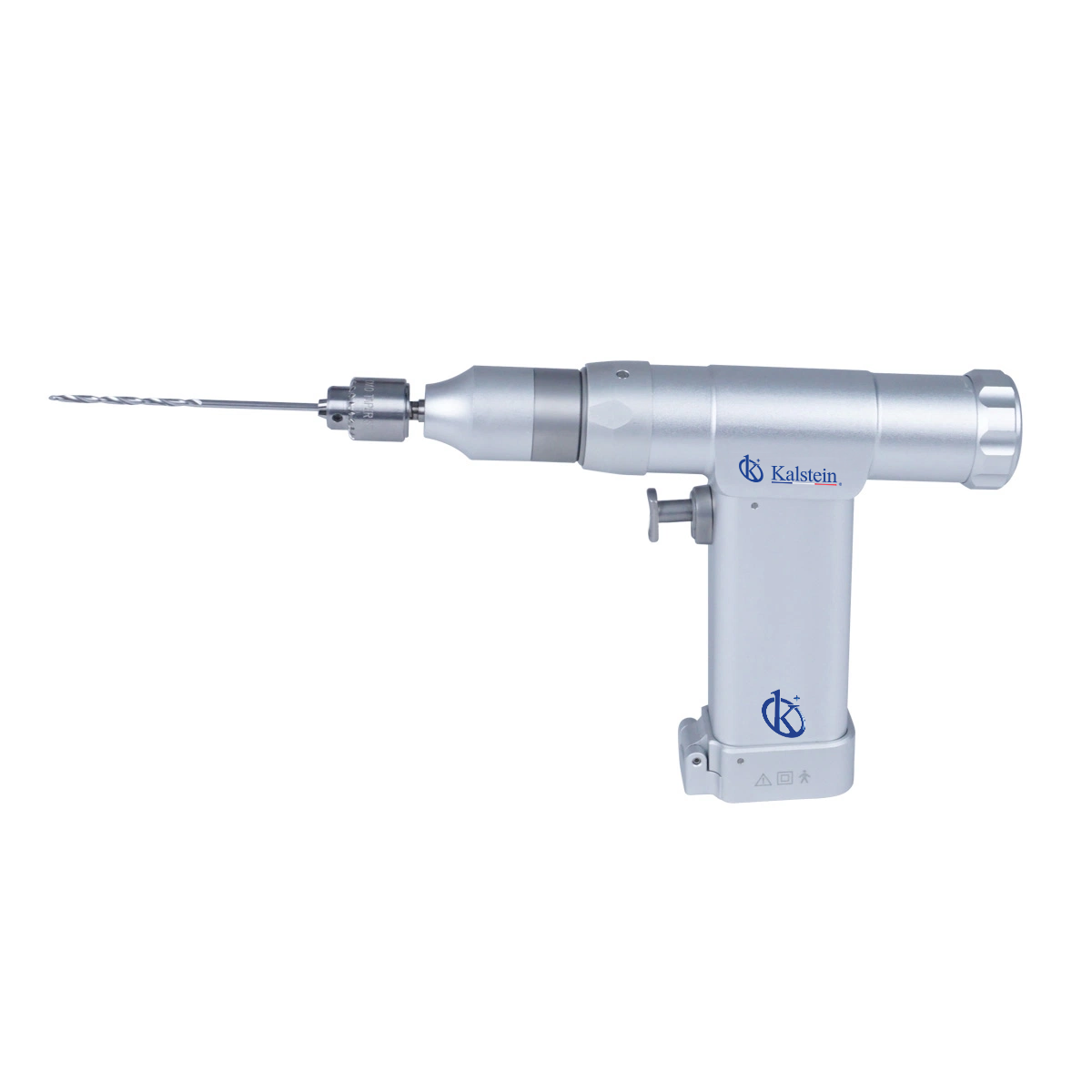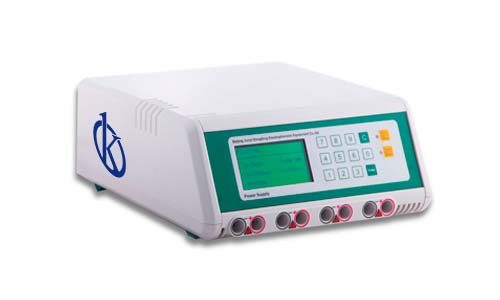Ultrasonic cleaning has revolutionized laboratory sample preparation, offering unprecedented precision and efficiency. This technology utilizes high-frequency sound waves to agitate a liquid, creating cavitations that remove contaminants from sample surfaces. This method is not only fast but also highly effective at cleaning hard-to-reach areas such as cracks and crevices in laboratory equipment.
The advantage of ultrasonic cleaning lies in its ability to remove a wide variety of contaminants, including dust, grease, bacteria, and chemical residues. Additionally, this technology is particularly useful for preparing samples in research, ensuring they are free from contaminants that could affect experimental results. With ongoing advancements, ultrasonic cleaning continues to be an essential tool in laboratories worldwide.
Ultrasonic Cleaner by Kalstein
The ultrasonic cleaner by Kalstein stands out for its efficiency and reliability in laboratory sample preparation. Designed to meet the highest standards, this device guarantees deep and uniform cleaning of laboratory instruments, regardless of their complexity or size. Kalstein’s advanced technology ensures that each cleaning session is optimal, significantly reducing the time required to prepare samples.
This ultrasonic cleaner offers various settings that allow you to adjust the intensity and duration of the cleaning process, catering to the specific needs of each laboratory. Additionally, its robust design and ease of use make it an ideal choice for laboratories seeking to improve operational efficiency. Backed by a renowned brand in laboratory technology, this device is a secure investment for any institution seeking quality and performance.
Characteristics of Ultrasonic Cleaners
Ultrasonic cleaners are equipped with ultrasonic generators that transform electrical energy into high-frequency mechanical vibrations. These vibrations create sound waves in the cleaning liquid, forming millions of microbubbles that implode, thus removing contaminants from sample surfaces. This process, known as cavitation, ensures efficient and thorough cleaning without damaging delicate materials.
Many models of ultrasonic cleaners also include additional functions such as heating and digital timers. Heating helps dissolve and remove contaminants more quickly, while timers allow precise control over the cleaning time. These features make ultrasonic cleaners extremely versatile and suitable for a wide range of laboratory applications, from cleaning glassware to preparing biological samples.
Why Do Ultrasonic Cleaners Have This Price?
The cost of ultrasonic cleaners can vary significantly depending on several key features. Factors such as tank capacity, the power of the ultrasonic generator, and additional features like heating and digital timers directly influence the price. Advanced models that offer customizable settings and high-quality materials tend to have a higher cost due to their greater efficiency and durability.
Another reason for the cost of these devices is the cutting-edge technology they incorporate. The precision and efficacy of ultrasonic cleaners require high-quality components and meticulous design, which justifies their investment. Furthermore, the support and warranty offered by reputable brands also contribute to the final price, ensuring users receive a reliable and high-performance product.
Comparison of Ultrasonic Cleaners
When comparing different models of ultrasonic cleaners, it is important to consider several key aspects. Tank capacity is a crucial factor as it determines the volume of samples that can be cleaned simultaneously. Models with larger tanks are ideal for laboratories with high workloads, while smaller tanks may be sufficient for more specific applications.
The power of the ultrasonic generator is also a fundamental aspect. More powerful models can provide faster and more effective cleaning, especially for samples with difficult-to-remove contaminants. Additionally, additional features such as heating, timers, and adjustable operating modes (e.g., Eco mode and Dynamic mode) can significantly enhance the versatility and efficiency of the cleaning process.
Pros and Cons of Ultrasonic Cleaners
|
Pros |
Cons |
|
High cleaning efficiency |
High initial cost |
|
Ability to clean hard-to-reach areas |
Requires regular maintenance |
|
Reduction of sample preparation time |
Energy consumption |
|
Use of specialized cleaning solutions |
Potential to damage delicate materials if used incorrectly |
|
Versatility in laboratory applications |
Noise during operation |
|
Time and temperature adjustments |
Need for proper training for adequate use |
|
Maintenance of sample integrity |
Limitations in tank size |
|
Reduction of chemical waste |
Dependence on the quality of the solvent used |
Advantages of These Ultrasonic Cleaners
One of the main advantages of ultrasonic cleaners is their ability to perform deep and thorough cleaning in a short period. This not only improves the operational efficiency of the laboratory but also ensures that samples are free from contaminants that could interfere with experimental results. Additionally, these devices are extremely versatile and can be used for a wide range of applications, from cleaning instruments to preparing biological and chemical samples.
Another significant advantage is the reduction in the use of aggressive chemicals. Ultrasonic cleaners can use water and less toxic cleaning solutions, which is not only safer for operators but also more environmentally friendly. Furthermore, maintaining instruments and equipment in optimal conditions prolongs their lifespan, representing long-term economic savings for laboratories.
Other Benefits of These Ultrasonic Cleaners
In addition to their efficiency and versatility, ultrasonic cleaners offer additional benefits that make them an indispensable tool in any laboratory. For example, the ability to adjust cleaning parameters allows customization of the process according to the specific needs of each application. This ensures optimal cleaning without the risk of damaging delicate materials.
Moreover, ultrasonic cleaners are known for their ability to completely remove biological and chemical residues, which is crucial in research and diagnostic applications. This disinfection capability ensures that samples and equipment are completely free from contaminants, enhancing the accuracy and reliability of experimental results.
Customer Reviews of Ultrasonic Cleaners
Users of ultrasonic cleaners consistently express satisfaction with the performance and effectiveness of these devices. Many highlight the significant reduction in cleaning time and the improvement in the quality of prepared samples. Additionally, laboratories that have integrated these devices into their daily routines have observed greater consistency in experimental results, which is crucial for research and development.
Another common opinion among users is the ease of use and maintenance of these devices. Modern ultrasonic cleaners are designed to be intuitive and require minimal manual intervention, reducing the workload on laboratory staff. Additionally, their durability and reliability make them a valuable investment for any institution looking to improve its cleaning and sample preparation processes.
Frequently Asked Questions
1. What cleaning solutions can be used in an ultrasonic cleaner?
The most recommended solutions are those that do not damage the materials being cleaned. Water-based solutions or solvents compatible with specific contaminants and sample materials can be used.
2. How long should an ultrasonic cleaning cycle last?
Cleaning time can vary depending on the type and amount of contaminants. Generally, cleaning cycles last between 3 to 6 minutes.
3. Is it safe to clean all types of materials with ultrasonics?
While ultrasonic cleaning is effective for most materials, it is important to verify the material’s compatibility with ultrasonic waves and the cleaning solutions used.
4. How often should ultrasonic cleaner maintenance be performed?
Regular maintenance is necessary to ensure the device operates optimally. This includes cleaning the tank and checking electrical and mechanical components.
5. Can ultrasonic cleaners remove all types of contaminants?
Yes, ultrasonic cleaners are effective in removing a wide range of contaminants, including organic and inorganic residues.
6. What additional benefits do modern ultrasonic cleaners offer?
In addition to efficient cleaning, modern cleaners offer features such as adjustable operating modes, temperature control, and timers, enhancing the versatility and effectiveness of the cleaning process.
What Does Kalstein Offer with Ultrasonic Cleaners?
Kalstein offers a range of ultrasonic cleaners designed to meet the demanding needs of modern laboratories. These devices combine advanced technology with intuitive design, providing consistent and efficient cleaning results. With adjustable features and reliable performance, Kalstein’s ultrasonic cleaners are an essential investment for any laboratory seeking to improve its sample preparation processes.
Looking for a fusion of innovation and quality? You’ve come to the right place. At https://kalstein.co.uk/category-product/laboratory-line/ultrasonic-cleaner/ we offer you the luxury of exploring our exclusive catalogue of laboratory equipment. We manufacture each piece of equipment with a level of excellence, making KALSTEIN the trusted brand in the market. Our intuitive and agile online purchase channels are designed for your convenience, ensuring the friendliest prices. Don’t hesitate any longer, at KALSTEIN, we bring science to life, it’s time to be part of our community. https://kalstein.co.uk/




